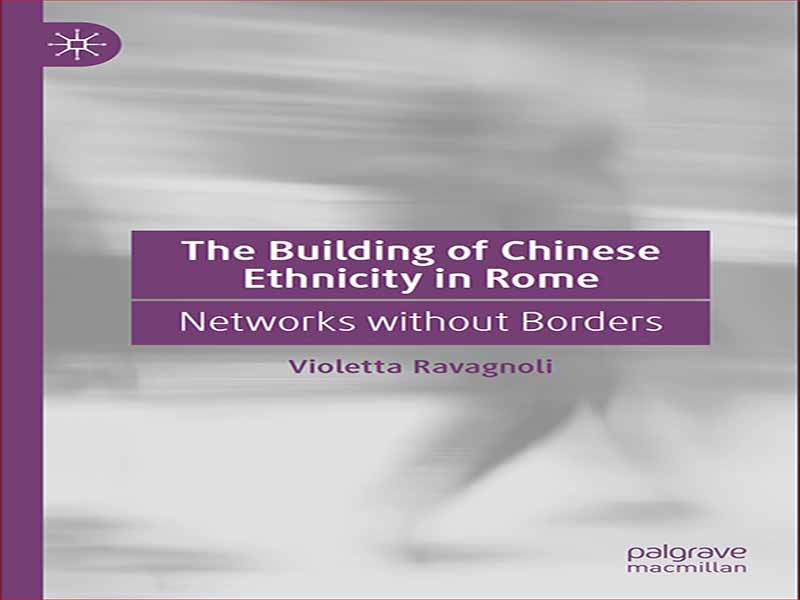- عنوان: The Building of Chinese Ethnicity in Rome / Networks without Borders
- نویسنده: Violetta Ravagnoli
- حوزه: اقوام
- سال انتشار: 2022
- تعداد صفحه: 196
- زبان اصلی: انگلیسی
- نوع فایل: pdf
- حجم فایل: 3.37 مگابایت
در 1 سپتامبر 2017، La Repubblica، یک روزنامه برجسته ایتالیایی، مقاله ای را منتشر کرد که در آن رویای ادغام قومی در محله رومی Esquiline را اعلام کرد. از اواخر دهه 1990، تعداد مهاجرانی که وارد رم شده و ساکن شدند، 115 درصد افزایش یافت، در حالی که جمعیت بومی رم به جای آن کاهش یافت. در طی آن سالهای مهاجرتهای ورودی، اسکیلین به نماد یک روم چندفرهنگی تبدیل شد که به طور بالقوه کشور را به جامعهای جدید، باز و ترکیبی هدایت میکرد. این چشمانداز بلندپروازانه که بهویژه توسط سیاستمداران و روشنفکران مترقی مورد توجه قرار میگرفت، قرار بود جغرافیا و اجتماعی بودن اسکولین را تغییر دهد و کل شهر را به عصر جدیدی از زندگی مشترک هماهنگ هدایت کند. نیکولا لاژیویا در کتاب خود اسکیلینو توضیح میدهد که چگونه رویای روم چند قومیتی که به طور بالقوه میتواند به الگویی برای مهماننوازی برای کل شبه جزیره تبدیل شود – که در حالت ایدهآل آن را به سوی اجرای یک جامعه چند فرهنگی صلحآمیز سوق دهد – در عوض رویایی از هم پاشیده بود. که به طرز بدی شکست خورده بود.
امروزه Esquiline اغلب به عنوان “محله چینی های رومی” شناخته می شود، تعریفی که حامل حس ناامیدی، از دست دادن و بی دقتی است. در مقاله دیگری در La Repubblica، Esquiline به عنوان مکانی برای دیگ ذوب “سبک vaccinara” تعریف شده است که تداعی کننده یک غذای سنتی رومی است که با تکه های ضایعات یک گاو، به ویژه دم آن، با مخلوطی از سبزیجات پخته می شود. این خورش بیانگر یک رومی بودن است که از صرفه جویی، نبوغ، شادی و همچنین سستی ناشی از فقر ساخته شده است. و در مقاله، نمادی از نامگذاری و وجود بحث برانگیز “محله چینی رومی” است.
این تحقیق تقریباً بیست سال پیش آغاز شد، زمانی که به عنوان دانشجوی زبان چینی، مشتاق یافتن مکانهایی برای تمرین ماندارین و ملاقات با مردم چینی بودم. آن زمان بود که یکی از همکلاسی هایم مرا در مورد یک کلیسای انجیلی بسیار استقبال کرد در اسکویلین روشن کرد. من برای قدم زدن در اطراف پیازا ویتوریو رفتم اما نتوانستم کلیسا را پیدا کنم. اینترنت جریان اصلی نبود و یافتن آدرس های دقیق دشوار بود. من به دنبال ساختمانی بودم که شبیه تصویر من از یک کلیسا باشد و نمی توانستم به مکانی برای عبادت که شبیه یک آپارتمان یا یک فروشگاه است فکر کنم. با این وجود، این سفر بیهوده نبود، همانطور که هرگز مانند آن روز رم را تجربه نکرده بودم: شهری ساخته شده از مغازه های کوچک، مملو از اجناس «قومی» که به قیمت ارزان و نه با قیمت های بالا مانند «رادیکال» فروخته می شد. فروشگاه های شیک در معتبرترین مناطق مرکز شهر. پیازا ویتوریو و اطراف آن، در آن زمان، نمایی اجمالی از دنیای آینده را ارائه می کرد. مغازههای «قومی» عمدتاً توسط افرادی از جنوب و شرق آسیا اداره میشد و تاجگذاری بازار معروف در وسط میدان را بر عهده داشت.
On September 1, 2017 La Repubblica, a prominent Italian newspaper, published an article declaring the failure of the dream for ethnic integration in the Roman neighborhood of the Esquiline. Since the late 1990s, the number of migrants arriving and settling in Rome grew by 115%, while the native population of Rome shrunk instead. During those years of incoming migrations, the Esquiline became the symbol of a multicultural Rome that would potentially lead the country to a new, open and blended society. This ambitious vision, held in high consideration especially by progressive politicians and intellectuals, was supposed to reshape the geography and the sociality of the Esquiline and to lead the whole city into a new era of harmonious cohabitation. Nicola Lagioia in his book Esquilino explains how the dream of a multi-ethnic Rome that could potentially become a model for hospitality for the entire peninsula—ideally leading it toward the implementation of a peaceful multicultural society—was instead a shattered dream that had miserably failed.
The Esquiline today is often referred to as the “Roman Chinatown,” definition that carries a sense of despair, loss, and carelessness. In another article on La Repubblica, the Esquiline is defined as a place for melting pot “vaccinara style” evoking a traditional Roman dish made with the scrap pieces of a cow, specifically the tail, simmered with a mix of vegetables. This stew is expression of a Roman-ness made of thriftiness, ingenuity, joviality, but also of a poverty-induced laxity; and in the article, it symbolizes the controversial designation and existence of a “Roman Chinatown.”
This research started almost twenty years ago, when as a student of Chinese language, I was eager to find places to practice Mandarin and meet people of Chinese origins. That was when one of my classmates enlightened me on a very welcoming Evangelical Church in the Esquiline. I went for a stroll around Piazza Vittorio but could not find the Church. The Internet was not mainstream, and it was hard to find precise addresses. I was looking for a building resembling my image of a Church and not able to contemplate a place of worship that looked like an apartment or a store. Nevertheless, the trip was not made in vain, as never had I experienced Rome as I did that day: a city made of small shops, crammed with “ethnic” goods sold inexpensively and not at high prices as in the “radical-chic” shops in the most prestigious areas of the city center. Piazza Vittorio and its surroundings offered, back then, a glimpse of a world to come. The “ethnic” shops were mostly run by people from South and East Asia and crowned the famous market in the middle of the Piazza.
این کتاب را میتوانید از لینک زیر بصورت رایگان دانلود کنید:



































نظرات کاربران